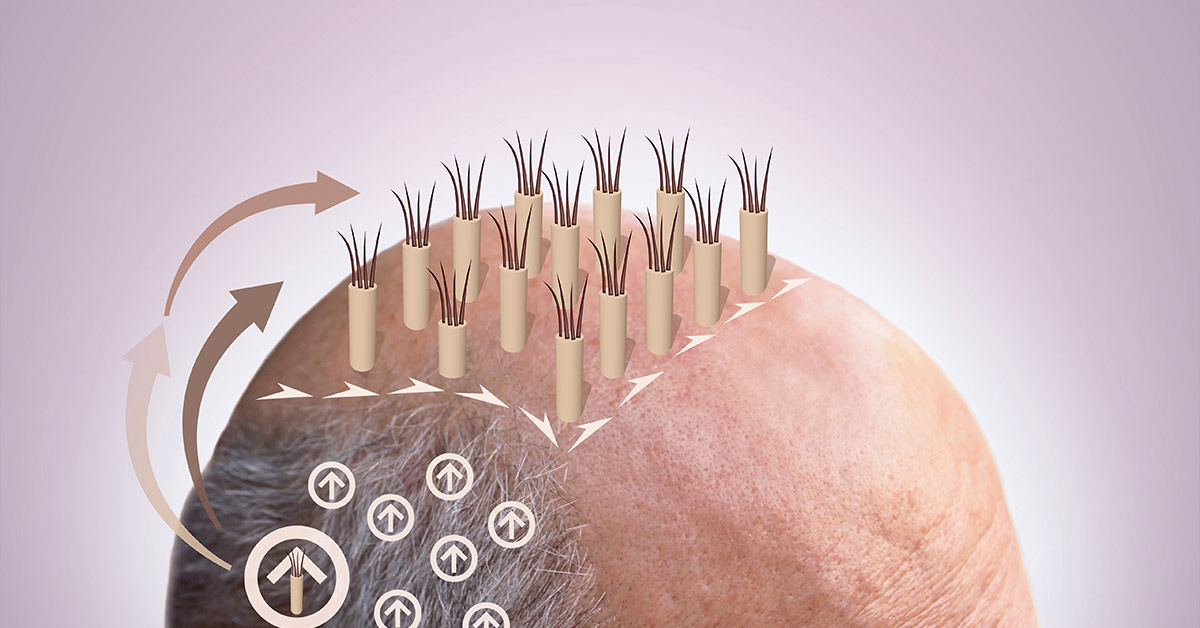When considering hair restoration, you will almost certainly encounter the terms follicular unit extraction (FUE) and follicular unit transplant (FUT). These are the primary methods of extracting hair follicles and transplanting them to create a rejuvenated hairline.
FUE is when individual hair follicles are removed from a donor area on the scalp (or sometimes elsewhere on the body) and transplanted into an area of the scalp where hair is thinning or balding. FUE can be done manually or with robotics-assisted devices like the ARTAS® and NeoGraft® systems.
FUT involves manually removing a strip of skin and follicles from a donor area on the scalp. It is then relocated to a bald area elsewhere on the scalp. Our clients often ask which procedure is more effective and natural-looking… so let’s compare the two processes.
Is FUE as Effective as FUT?
Both FUE and FUT are highly effective when performed by an expert surgeon. Each procedure has distinct advantages, and it’s important to examine your options to choose the path that is most appropriate for you.
In general, FUT tends to work better for those with a larger area of baldness while FUE typically is the better option for those with poor hair density or a soft scalp. To determine which will work better for you, the first step is to consult with your surgeon who will perform a thorough examination and make recommendations based on their findings.
Is FUE or FUT More Painful?
A local anesthetic is used during both FUE and FUT, so you shouldn’t experience any pain during either procedure. Because FUT involves the removal of strips of skin, the incisions are larger and require stitches. It’s only natural that this would produce more post-surgical discomfort than a less invasive FUE procedure.
This shouldn’t discourage you from FUT if it’s a better option for you. Your doctor will work with you to manage any pain or discomfort you experience during the healing process.
Does FUE Look Natural?
Today’s procedures look so natural, even your hairstylist or barber may not be able to detect a fully healed FUE transplant. In FUE, only a few hairs are transplanted at a time – so it avoids visible scarring and the obvious “plug” or “strip” look of the past.
Contemporary FUT transplants have also come a long way, using more precise techniques to create a natural look and to decrease the visible scarring that made older methods look conspicuous. After both procedures, it will take several months for the transplants to grow normally. And a few months after that they will look even fuller and more natural… remaining that way for a lifetime.
What Percentage of FUE Grafts Survive?
The industry standard for hair graft survival is approximately 60-70 percent. Under optimal conditions (and with a skilled surgeon), the rate for FUE grafts can be as high as 95-100 percent. The same is true for FUT grafts. This is why it’s important to choose an experienced surgeon and to follow all recommendations for proper aftercare.
Do FUE Scars Fade?
Because FUE procedures extract and transplant single or very small groups of follicles, any scarring from these small, round punches is minuscule and may be completely undetectable once healed. FUT – on the other hand – typically leaves thin, linear scars.
Any scarring from either procedure will fade to some degree, and it will likely be covered by donor or transplanted hair. The goal of every hair replacement surgeon is to make your new hairline look natural. This includes minimizing scarring and ensuring any resulting scars aren’t visible.
Set Up a Hair Restoration Consultation Today
Reef Hair offers a full spectrum of treatments and transplantation options – including device assisted ARTAS® and NeoGraft® procedures, as well as classic manual FUE and FUT transplants.
Get in touch with us today to set up a consultation. Our team will perform a full hair & scalp analysis and discuss potential treatments so you can choose the right procedure that will help you achieve the hairline you desire!


